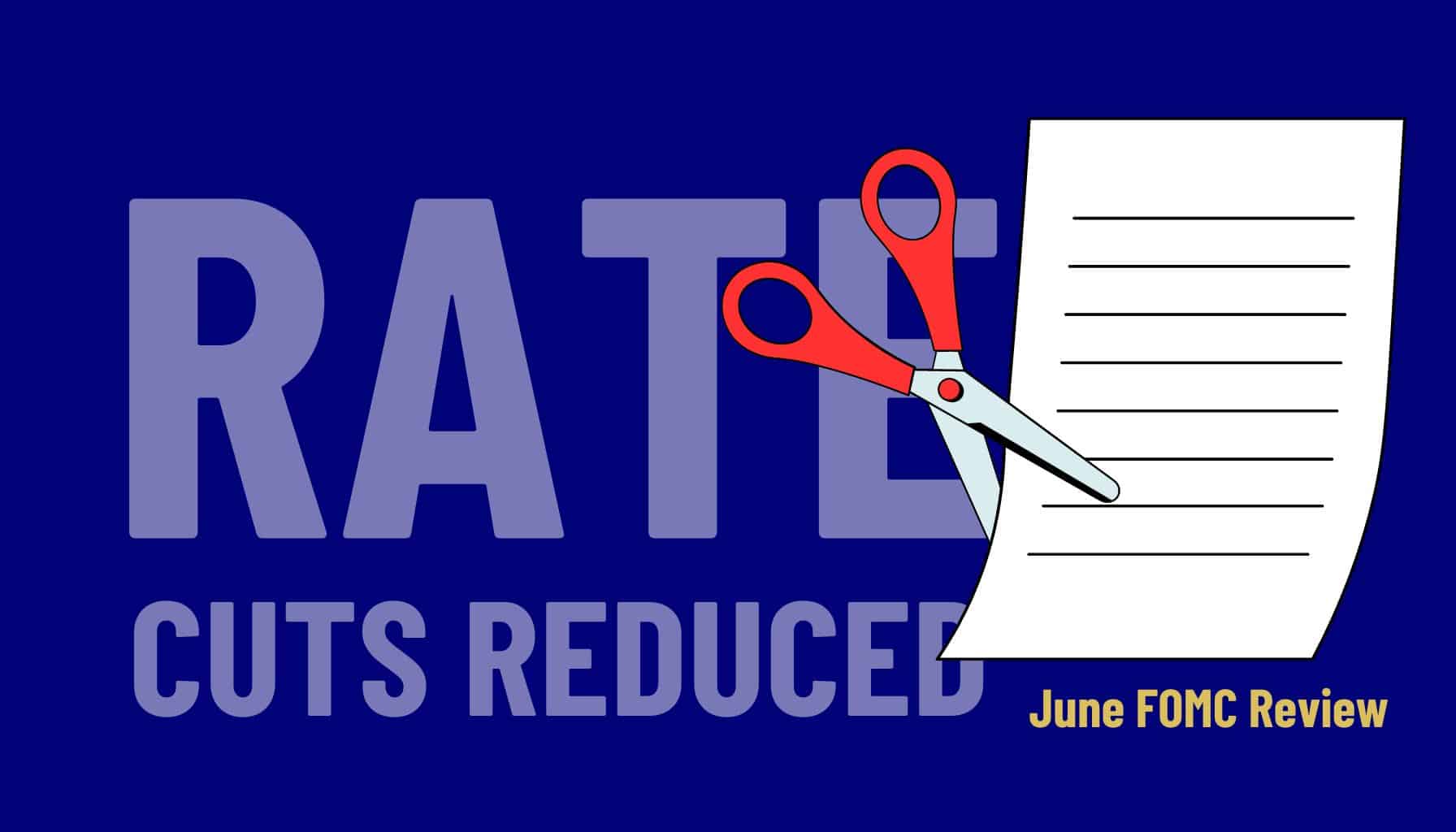
- Opening Bell
- June 13, 2024
- 4 min read
FOMC Dashes Hopes of Multiple Rate Cuts, What’s Next?
As predicted in yesterday’s Opening Bell, Federal Funds Rate is held and remains at 5.50%.
The FOMC meeting itself and CPI data came as a bit of a surprise to market participants – resulting in a roller coaster of price action and emotions.
CPI data came in lower than forecasted, sparking waves of optimism across the markets. With expectations riding high, the Fed’s decision to reduce its forecasted three rate cuts in 2024 to just one came as an unexpected jolt, catching many by surprise.
So what’s next for the markets?

Why is the Federal Reserve reluctant to cut rates?
June’s CPI data came as a pleasant surprise, with metrics showing a slight decrease in inflation both month-over-month and year-over-year:
- CPI m/m was 0.0%, lower than the forecasted 0.1%.
- CPI y/y was 3.3%, lower than the forecasted 3.4%.
- Core CPI m/m was 0.2%, lower than the forecasted 0.3%.
These readings align with the desired conditions for a rate cut, indicating progress in slowing down inflation.
However, there’s a catch. At the beginning of the year, CPI y/y was 3.1%, so while there has been month-over-month improvement in June, inflation remains higher than expected. This likely explains why the Fed is hesitant to cut rates soon and has decided to reduce the number of rate cuts planned for 2024.
Furthermore, it’s likely that the Fed would like to see a downward trend develop in the CPI data readings before issuing further rate cuts.
So what’s next for the markets?
The next important economic data is the Producer Price Index (PPI) data and unemployment claims. This data comes out today at 12:30 UTC time.

What is the PPI and How Do We Interpret It?
PPI measures the cost of production for businesses, and acts as an important leading indicator for CPI inflation. If the cost of production is going up, it’s likely (but not always) that the consumer price index will rise as well.
From the forecast, we can see that PPI should be coming lower, indicating that the next CPI reading should be trending lower as well.
If the data does come in as expected, or even lower – markets should be moving up and pricing in the idea of lower inflation.
What are Unemployment Claims and How Do We Interpret It?
Unemployment claims represent the amount of people seeking unemployment benefits from the government. A higher number generally signifies that people are less likely to spend (holding onto their dollars), creating less demand in the market and thus bolstering the strength of the dollar.
Conversely, a lowering amount of unemployment claims suggest that people are in work, and thus able to spend additional income on goods and services. This may contribute to rising inflation.
When viewed with the context of the PPI, the upcoming unemployment claims data could signify a few different scenarios:
Lowering PPI and Unemployment Claims: This scenario indicates a strengthening job market coupled with easing inflationary pressures at the production level. The Federal Reserve is unlikely to face pressure to issue rate cuts in this environment.
Lowering PPI and Rising Unemployment Claims: This scenario indicates easing inflation at the production level but a weakening job market, presenting a mixed dilemma for the Federal Reserve. The Fed might consider rate cuts to stimulate economic growth while balancing the need to prevent inflation from falling too low.
Rising PPI and Unemployment Claims: This scenario indicates increasing inflationary pressures alongside a deteriorating job market. Again, this is a mixed dilemma for the Federal Reserve, but the increasing unemployment claims usually tilt the Fed to issue a rate cut to stimulate the economy.





